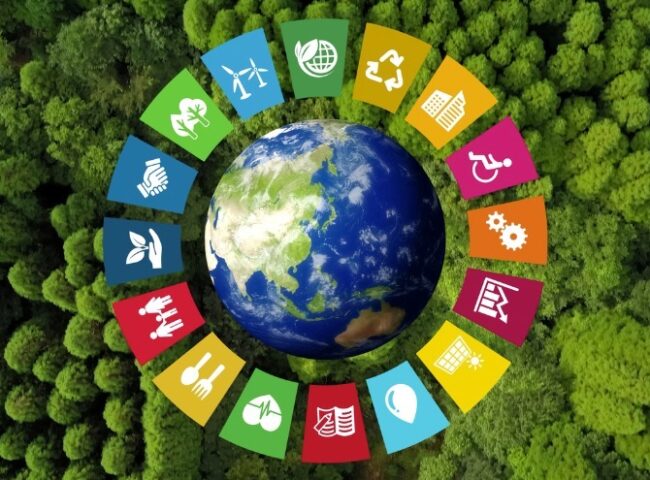Table of Contents
The art of upcycling has gained significant attention in recent years as consumers become increasingly conscious of the impact of their purchasing decisions on the environment. Upcycling involves taking waste materials and transforming them into new and useful products, thereby reducing the amount of waste generated and promoting sustainable manufacturing practices. Discover how 3D Printing for Sustainable Manufacturing is done through upcycling.
Learn how recycled materials are being used to create innovative, eco-friendly products, reducing waste and promoting a circular economy.
Sustainable manufacturing practices have become increasingly important as the world becomes more aware of the environmental impact of industrial activities. One way companies are promoting sustainability is through upcycling – the process of transforming waste materials into new and useful products.
3D printing technology has enabled upcycling in a whole new way, allowing companies to use recycled materials to create high-quality products. In this article, we will explore how 3D printing is revolutionizing sustainable manufacturing with recycled materials.
What is upcycling?
Upcycling refers to the process of transforming waste materials or unwanted products into new products of higher quality or value. This differs from recycling, which breaks down materials to create new products. Upcycling involves creative thinking and repurposing items in a way that retains their original quality while adding value.
Upcycling has numerous benefits for the environment and society. It reduces the amount of waste in landfills, conserves natural resources, and promotes innovation and creativity. By finding new uses for discarded items, upcycling reduces the need for new production, ultimately leading to less pollution and a smaller carbon footprint.
The role of 3D Printing for Sustainable Manufacturing in Upcycling
3D printing, also known as additive manufacturing, is a process that builds three-dimensional objects from digital models. Unlike traditional manufacturing methods, 3D printing can produce complex shapes and structures with minimal waste.

3D printing is being used in sustainable manufacturing by creating products from recycled materials, reducing waste and promoting the circular economy. This approach to manufacturing aims to minimize waste and maximize resource utilization by keeping materials in use for as long as possible.
The Benefits of Upcycling with 3D Printing
Reducing Waste
Traditional manufacturing processes often result in a significant amount of waste. With 3D printing, only the amount of material needed to create the product is used. This reduces waste and conserves natural resources.
Using Recycled Materials
One of the most significant benefits of upcycling with 3D printing is the ability to use recycled materials. This not only reduces the environmental impact of manufacturing but also creates a market for recycled materials that might otherwise end up in landfills.
High-Quality Products
3D printing enables the creation of high-quality products with intricate designs and complex geometries. This makes it possible to create products that were previously impossible to manufacture with traditional processes.
Cost-Effective
While the initial investment in 3D printing equipment and infrastructure can be significant, the cost of materials and production is often lower than with traditional manufacturing processes. This makes it an attractive option for companies looking to reduce costs while promoting sustainability.
Challenges of Upcycling with 3D Printing
Quality of Recycled Materials
One of the biggest challenges in upcycling with 3D printing is the quality of recycled materials. The consistency and quality of recycled materials can vary, which can affect the quality of the final product.
Processing Recycled Materials
The recycling process can be complex and require additional processing to make the materials suitable for 3D printing. This can be time-consuming and expensive, and may require additional investment in equipment and infrastructure.
Supply Chain
The supply chain for recycled materials can be unreliable, which can affect production timelines and quality. Companies may need to work with multiple suppliers to ensure a consistent supply of high-quality recycled materials.
Investment in Equipment and Infrastructure
To upcycle with 3D printing, companies must invest in the necessary equipment and infrastructure to recycle and process materials for 3D printing. This can be costly, and may require additional space and resources.
Case studies of 3D printing and upcycling
One example of 3D printing and upcycling is the creation of prosthetics using recycled plastic. A team of engineers from the University of Toronto has developed a method for producing prosthetic hands and arms using plastic waste. The process involves shredding the plastic and turning it into filament that can be used in 3D printing. This approach not only reduces waste but also provides affordable and functional prosthetics for those in need.

Another application of 3D printing in upcycling is the use of electronic waste. E-waste, which includes discarded electronics such as computers and smartphones, is a growing environmental concern. However, 3D printing technology is being used to transform e-waste into new products. For example, Dutch designer Dave Hakkens has created a 3D printer that can turn e-waste into filament, which can then be used to create new objects. This process not only reduces the amount of e-waste in landfills but also provides an opportunity to create unique and sustainable products.
In the fashion industry, 3D printing is being used for upcycling by creating new designs from recycled materials. For example, designer Danit Peleg has created a line of clothing using 3D printing technology and recycled plastic bottles. This approach to fashion not only reduces waste but also creates unique and customizable designs that are sustainable and environmentally friendly.
The Future of Upcycling with 3D Printing
As 3D printing technology continues to advance, the potential for upcycling with recycled materials is endless. There is a growing interest in using biodegradable materials in 3D printing, which would allow for even more sustainable production methods. Additionally, the ability to print objects on demand can reduce the need for mass production, leading to a smaller environmental impact.
Upcycling with 3D printing has the potential to address many of the environmental challenges we face today, including reducing waste, conserving natural resources, and promoting sustainability. By combining creativity and technology, we can find new and innovative ways to reuse materials and create a more sustainable future.
Advancements in Technology
As 3D printing technology advances, the quality and consistency of recycled materials will improve. This will make them more viable for use in manufacturing and reduce the challenges associated with using recycled materials.
Growing Demand for Sustainable Products
The demand for sustainable products is on the rise, creating a market for companies that prioritize sustainable manufacturing practices. Upcycling with 3D printing is a way for companies to differentiate themselves and meet the growing demand for sustainable products.
Upcycling with 3D printing is revolutionizing sustainable manufacturing by providing a new and innovative approach to waste reduction and resource conservation. This combination of creativity and technology is transforming discarded materials into new and valuable products, promoting the circular economy and reducing environmental impact. As 3D printing technology continues to advance, the possibilities for upcycling with recycled materials are endless.
Frequently Asked Questions
Upcycling involves taking old or discarded objects and transforming them into something of greater value or usefulness.
3D printing can use a wide range of materials, including recycled plastics, metals, and even food waste.
Yes, recycled metal can be obtained from a variety of sources such as old cars, bicycles, and other metal waste. The metal is then melted down, refined, and used as raw material for 3D printing.
Yes, recycled plastic can be obtained from a variety of sources such as old toys, water bottles, and other plastic waste. The plastic is then shredded, melted, and used as raw material for 3D printing.
3D printing technology makes it easier to produce complex shapes and designs with upcycled materials. Also, the process is much more environmentally friendly as it uses less energy and produces less waste.
3D printing produces minimal waste and can use recycled materials, reducing the environmental impact of manufacturing.
While 3D printing technology can be expensive, upcycling with recycled materials can reduce costs in the long run by reducing the need for new production.
One challenge is the availability of recycled materials, as not all materials can be easily recycled and turned into 3D printing filament. Additionally, the cost of 3D printing technology can be a barrier for some individuals and companies.
Related Blog Posts







